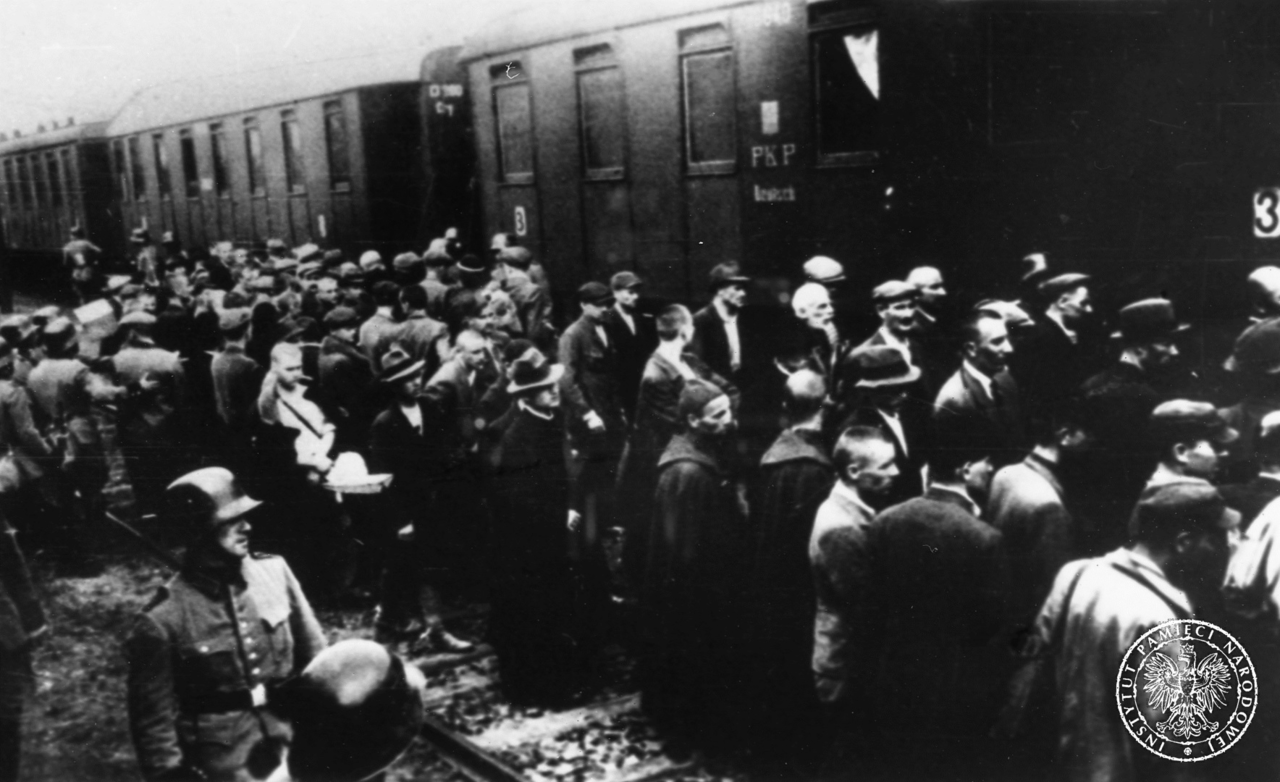14 June 1940 the first mass transport to the German Concentration Camp in Auschwitz took place. The vast majority of the 728 men were Polish political prisoners. Overall, the group consisted of members of the resistance movement; social and political activists arrested under AB Aktion, Catholic clergy, and a small group of Jews. Every one of them was subjected to severe torture and German officers abused the elderly in particular.
SS-Hauptsturmführer Karl Fritzsch, the deputy of Rudolf Höss, commandant of the Concentration Camp in Auschwitz, said to them: “You have not arrived at a sanatorium, but to a German concentration camp from which there is no other way out other then through the chimney. If someone does not like it, they can go straight to the wires. If there are Jews here, they have the right to live no more than two weeks, priests – a month, the rest – three months.”
No one could have thought then that the tragedy of the millions who would be locked behind the camp gate would last another five long years. Since the first prisoners arrived at the camp it would grow at a constant rate. The Germans expanded the camp many times, eventually transforming it into a true factory of death. Prisoners waited for liberation until January 1945 and from those first prisoners, about 200 survived the war. What did “hell on earth” look like at the time of the liberation?

How to explain the fact that the Germans, who were perfectly aware of the approaching Soviet army, carried out the mass extermination of Jews and representatives of other nationalities up until the very last moment?
For the Nazi leadership of the Third Reich, one of the basic goals of the war, an axiom of sorts, was the mass and total extermination of Jews, except for those few who were temporarily utilized as labor in industry and agriculture. And if, from 1943, it was indeed ordered to reduce the mortality of Jews, Poles and other prisoners in concentration camps, it was only partially effective. Even the criteria used by SS doctors during selection on the Auschwitz ramps remained virtually unchanged almost until the end of the camp’s existence. In the spring and summer of 1944, out of the more than 400,000 Jews deported from Hungary, only about 23% of men and women, most often teenagers and 20-year-olds, were chosen to work while the rest were immediately killed in the gas chambers. This was, of course, irrational from the point of view of the needs of the German war economy, since slightly older Jews could have been useful to Germany as workers. Thus, one can see this as the primacy of criminal ideology over current pragmatism, but also a certain lack of logic in the use of human resources by the SS authorities.
Almost until the end of 1944, they were developing the camp complex. They were zealously carrying out the orders, or was it already totally insane?
Actually, the greatest amount of construction work at Auschwitz can be dated to 1942. Plans to expand the camp to a total capacity of over a quarter million prisoners come from this period. Soon, however, it turned out that due to the huge numbers of fatalities caused by epidemics of infectious diseases, as well as the above mentioned extremely strict selection criteria, the population of prisoners in the camp increased very slowly, and even decreased periodically. Therefore, for over half a year, the one hundred and several dozen barracks already built in Birkenau remained uninhabited. In the spring of 1944, the expansion of the camp came basically to a halt, while the network of Auschwitz sub-camps located at the factories and mines of Upper Silesia was significantly expanded. Nevertheless, the SS design office continued to draft new investments, perhaps to justify the need for its existence or to refute an accusation of defeatism. The last documents showing an intention to continue construction works in Auschwitz come from the first half of January 1945.
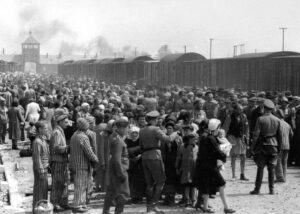
Did the prisoners know of the upcoming front? Did they make any attempts to fight?
News of the successes of the Allies reached the camp quite quickly; usually through Polish civilian workers employed in Auschwitz for more complicated construction and assembly works. Sometimes prisoners working as cleaners in the SS offices had the opportunity to listen in secret to BBC news. Thanks to this, for example, the news of the landing in Normandy had spread in the camp a few hours before the SS men learned about it. At the end of 1944, a clear sign of the approaching front was the fact that some barracks were being dismantled and crematoria demolished. And of course, this news raised joy among the prisoners, but also fear; many were convinced that the SS men would set fire to the barracks and murder all potential witnesses of the crimes committed at Auschwitz shortly before the arrival of the Soviet army. That is why, many months earlier, the prison underground organization prepared plans to resist, including a coordinated attack by partisans from nearby Home Army units. However, these were completely unrealistic and seemingly quite desperate. At that time, the SS contingent numbered over 4,000 people armed with repeating rifles and machine guns, perhaps outdated, but quite sufficient to defeat the completely defenseless prisoners.
The final women prisoners had been hanged only three weeks before the Soviets entered for having helped [in the largest rebellion in October 1944].
These were four Jewish girls, against whom the political department conducted a thorough investigation over many weeks. Also at the same time, dozens of Poles sentenced to death by the summary court of the Katowice Gestapo were murdered in the camp.
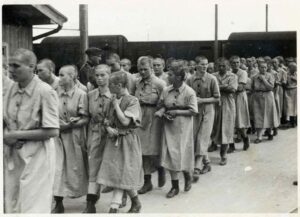
Why did the Americans and British, despite knowing and being pressed by various organizations, decide not to bomb the gas chambers, crematoria and railway lines leading to the camp?
In my opinion, this resulted from a combination of many circumstances: from disbelief in the exaggerated – as was believed – and alarmist news coming from occupied Poland, to a reluctance to go beyond the routine orders and tasks fulfilled by the commanders of the Allied Air Force on a daily basis. Even if politicians would have been willing to perform such an action, when asked about their opinion, commanders answered with extreme reluctance. They invented a lot of “objective difficulties” and pointed out that the Germans had been intensely bombarded for many months and were on the verge of collapse, so one more effort was needed to achieve the final victory and thus save the lives of prisoners. Most of these arguments can already be found in the British response to the Polish government’s proposal to bomb Auschwitz in early 1941. As Air Marshal Richard Peirse noted in a personal letter to General Sikorski, such an action would be “impractical”, especially in the face of focusing the RAF’s efforts on attacking targets in Germany. Bombing could also “carry many casualties among prisoners”, without the guarantee of “destroying the fence and the SS ammunition depot.”
In practice, the attack would have been possible since at least spring 1944, when the Allies organized large air bases in central Italy. Moving one or two squadrons of specialized light bombers there, whose crews had experience in attacking small point targets, would have been only slightly insignificant in terms of logistics. On the other hand, of course, we don’t know how they would react to the bombing of Germany. Even after the destruction of the crematoria, the bodies of prisoners could be burned on piles of wood, as in 1942, and murdered in buildings temporarily adapted to the needs of gas chambers. We will not find this out though because the Allies simply never made such an attempt.
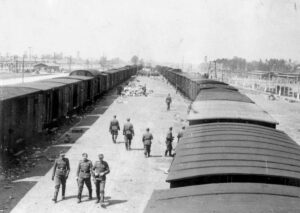
How were the traces removed and evidence of crimes committed in the camp destroyed?
First of all, from mid-1942 the bodies of murdered prisoners were being systematically burned on piles of wood and later in crematoriums. The ashes generated in this way were disposed of directly into the nearby Vistula river. In addition, at the end of 1944 and in the beginning of 1945, the SS partly dismantled and blew up all the gas chambers and crematoria located in Birkenau. Finally, shortly before the final evacuation of the camp, most of the files were burned, including in particular the files and documents of the Gestapo camp, while the barracks in which the SS had gathered the clothes and property of the murdered Jews were set on fire.
The fact that many files documenting German crimes survived is due to the prisoners.
This is probably the biggest and the most tangible achievement of the camp resistance movement. Reports on German crimes at Auschwitz systematically sent to Warsaw contained copies of SS documents, while copies of others, including crematorium plans, were smuggled out of the camp or hidden. Almost 40,000 negatives of photographs of prisoners and some photos of camp objects taken by the SS were preserved.
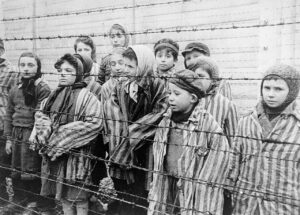
When did the so-called death marches start and in what direction? What was their purpose?
Orders were issued on 17 January 1945. Prisoners were taken out of the barracks from certain parts of Auschwitz, formed into columns and led on foot to Wodzisław Śląski or Gliwice. From there, they were transported by railway, in uncovered wagons – coal wagons, to other concentration camps in Germany. The main purpose of the evacuation was to later use the prisoners as laborers. However, because it took place in extremely difficult conditions, and in severely cold temperatures, the prisoners – hungry and exhausted, died by the hundreds or were killed by their escorts. It is estimated that during the three-day marches and later during transport, 6,000 to 9,000 prisoners lost their lives.
Were there fights between the Germans and the Soviets around Auschwitz?
Fortunately, no major fighting took place directly in the area of the camp, only skirmishes against the retreating Germans. However, major fights took place north (on the other side of the Vistula) and west of Oświęcim.
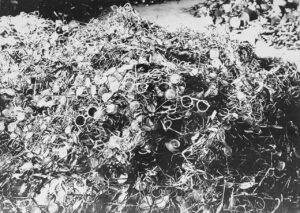
On 27 January 1945, the Soviets entered Auschwitz. What did they see?
The camp at that time was – apart from the crematoria mentioned above – practically undamaged, that is, it still existed: almost fifty brick blocks in Auschwitz I, about two hundred residential, wooden and brick barracks in Birkenau and sixty such barracks in the Monowitz camp. The Soviets found in them about seven thousand prisoners, left behind by the SS, because they could not leave the camp on their own due to illness or exhaustion. Dozens of corpses of those who died or were shot dead after the evacuation began were found in the blocks and on the streets.
Did the Soviets expect to find such a huge and well-functioning death factory?
Although the Soviet authorities obviously had considerable knowledge about Auschwitz, the commanding officers and soldiers who were entering the camp were completely unaware of what they would see there. The reports and combat orders of the units of the 1st Ukrainian Front show that Oświęcim was by no means the target of a planned operation and that it was occupied as part of a general attack on the Upper Silesian industrial region.
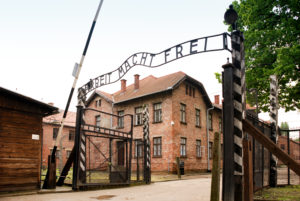
What traces of the crime did the Soviets discover and how did they document them? We know the numerous poignant accounts of American soldiers who liberated German concentration camps. Did you find any memoirs of Soviet soldiers?
The ruins of gas chambers and crematoria, thousands of pages of documents that the SS did not manage to destroy, over a million pieces of clothing, forty thousand pairs of shoes, seven tons of hair cut off to victims and prepared for shipment to German textile factories, etc. were found. Members of the state investigation commission arrived shortly afterwards to collect and secure this evidence. Many documents were then taken to the archives in Moscow, and unfortunately made available to researchers only in the early 1990s. Soviet cameramen also made a documentary. On the other hand, the accounts of the soldiers have been preserved, mainly written down many years after the war. One can hear – very natural and human feelings of shock, terror, hatred of the Germans, and compassion for the survivors, but also pride resulting from the fact that they brought the prisoners freedom.
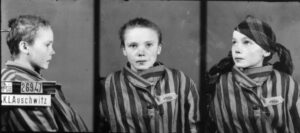
What did first aid look like for prisoners?
Since the Soviet commanders did not know what Auschwitz was, they were not initially prepared to provide effective help to prisoners. Of course, the soldiers tried to give the liberated prisoners what they had – bread and canned food. However, this often had tragic consequences. Totally exhausted, they ate everything, including meat and fat, just to satisfy their hunger – and as a result they soon died. It should be emphasized, however, that the Soviets quickly organized professional assistance by directing two field hospitals to Oświęcim. Soon, Polish doctors and nurses volunteered from Krakow, as well as local residents who donated food to the hospitals. However, out of the approximately 4,500 patients treated in these hospitals, despite the enormous efforts of medical personnel, over five hundred former prisoners died in the following weeks.
Under what circumstances was the first camp commander Rudolf Höss captured and handed over to the Polish authorities?
After the war, Höss hid under a changed name for a long time in a village near Flensburg in northern Germany. Ultimately, however, in March 1946 he was recognized and arrested by the British. He then testified in Nuremberg, after which he was handed over to the Polish authorities, put on trial, sentenced to death and executed in the Auschwitz camp. It must be admitted that as one of the few SS-men who did not try to avoid punishment, his largely honest testimony is today one of the most important sources for researchers of Holocaust history.
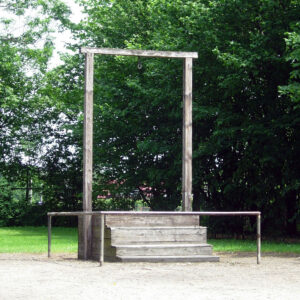
Today, 76 years after the liberation of the camp in Auschwitz, can we say that the perpetrators of the terrible crime were properly punished?
Unfortunately, this did not happen. Of the more than eight thousand SS men serving at Auschwitz at various times after the war, less than 10% were arrested and put on trial. Most of them, moreover, received very light sentences for belonging to the SS staff, because due to the lack of witnesses and documents it was difficult to prove them guilty of specific crimes. On the other hand, they themselves did not feel guilty and claimed that while in Auschwitz they knew nothing and did not hear about the gas chambers, or that they “only carried out orders.” So even if in the 1940s some of the senior officers and physicians responsible for the selection on the ramps were sentenced to death, most non-commissioned officers and privates avoided responsibility in practice. Later, at the beginning of the Cold War, extradition to Poland was stopped altogether, and in Germany efforts were made to forget about these matters. It wasn’t until a dozen or so years later that the so-called Auschwitz trials were held in Frankfurt, but then – it was too late – only a few criminals were put on trial.
Interviewers: Piotr Abryszeński & Piotr Bejrowski
Translation: Alicja Rose & Jessica Sirotin

